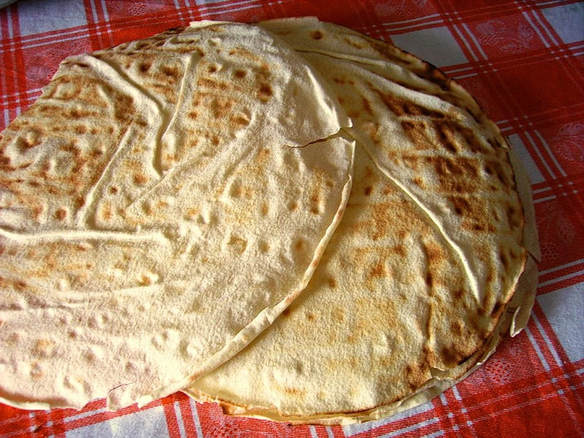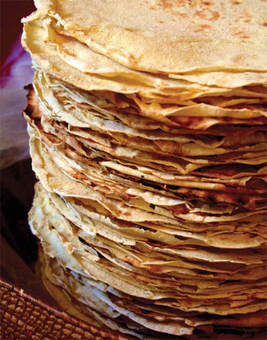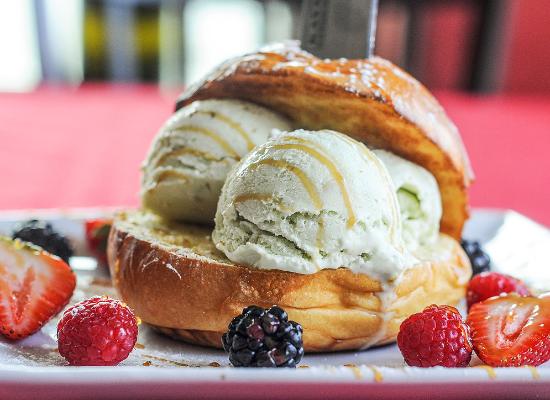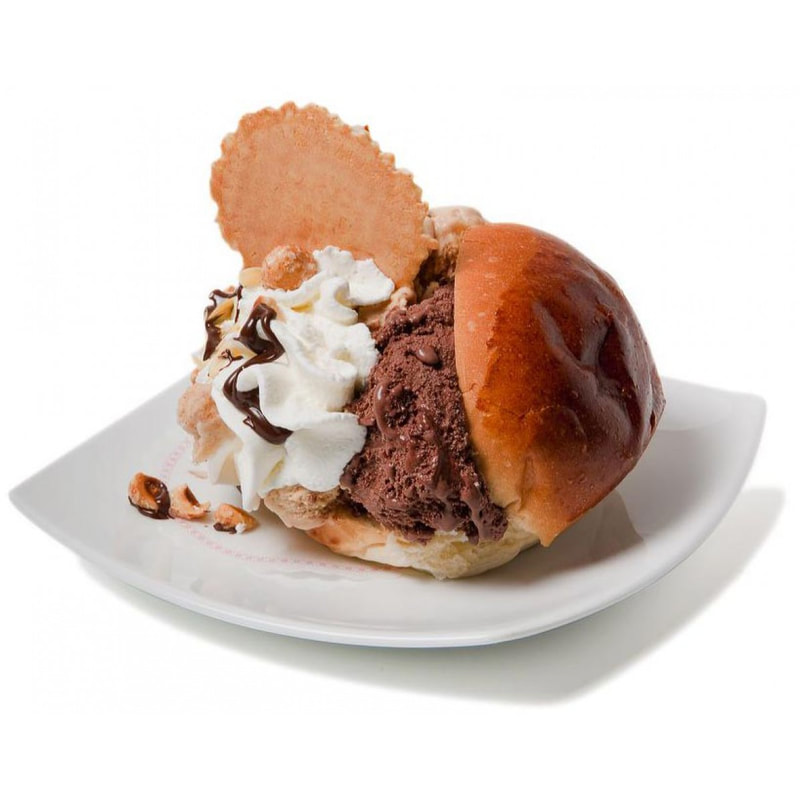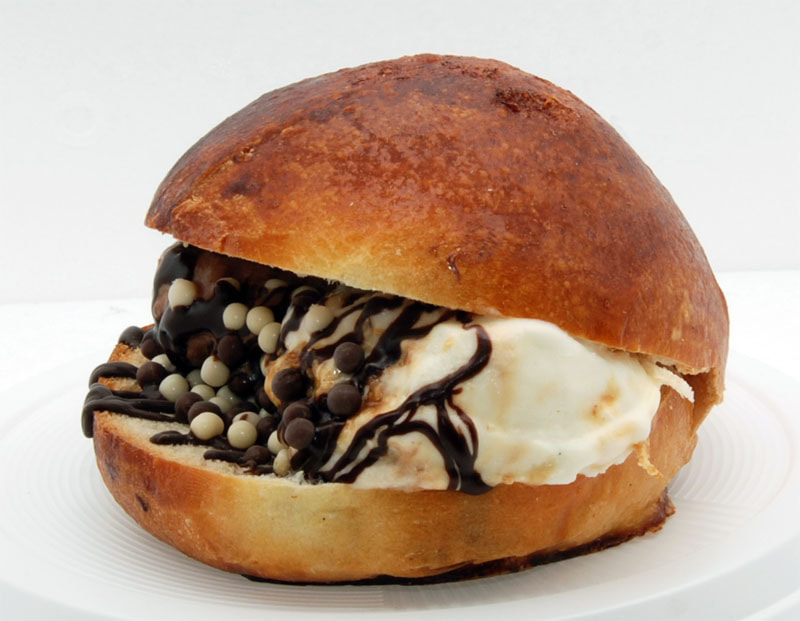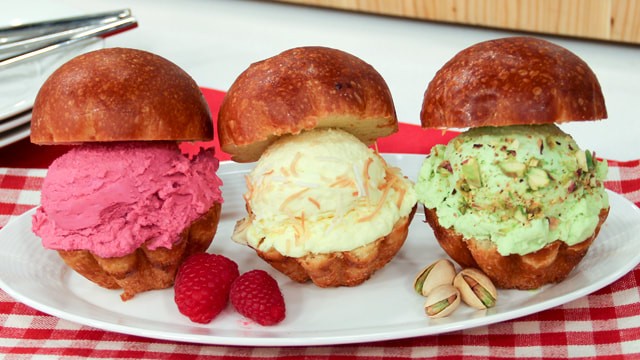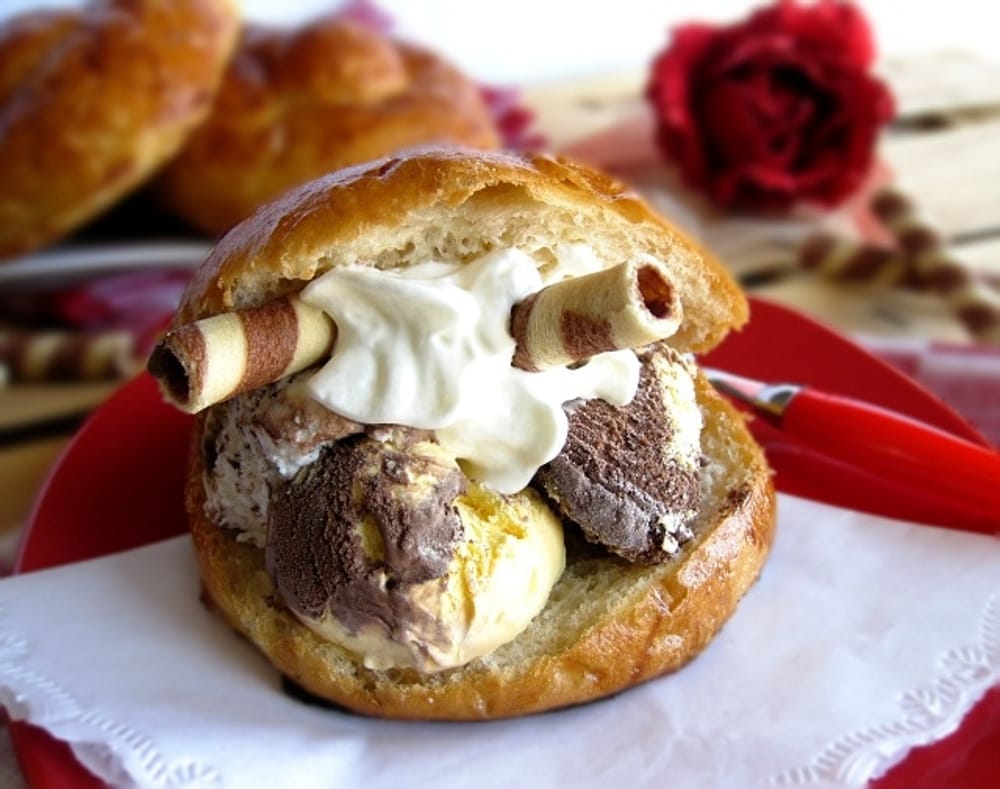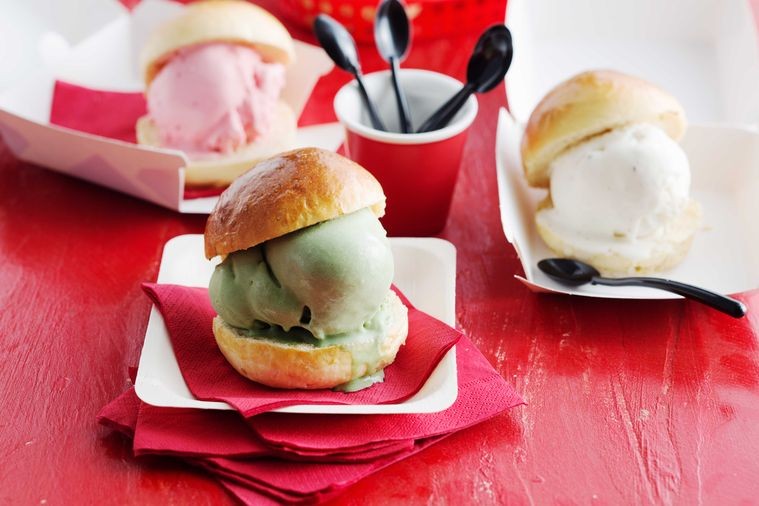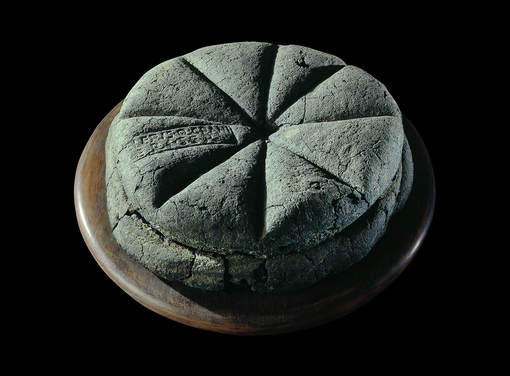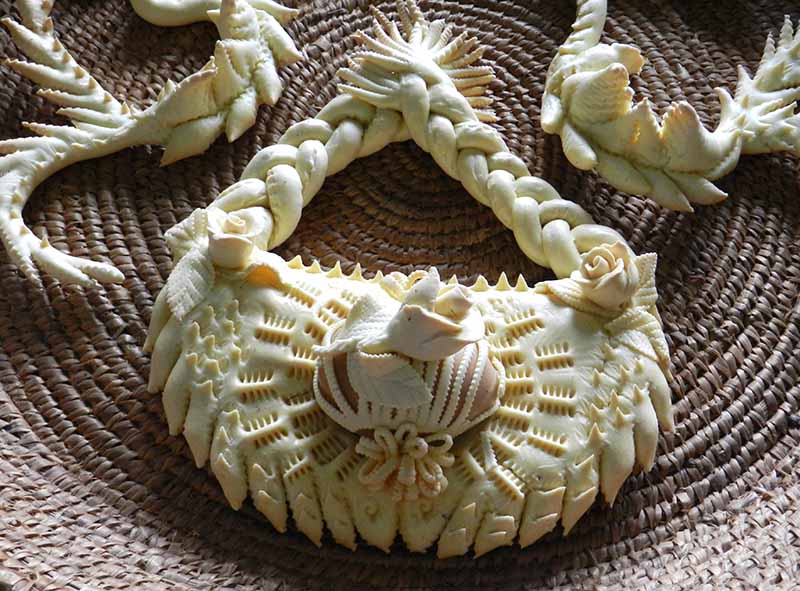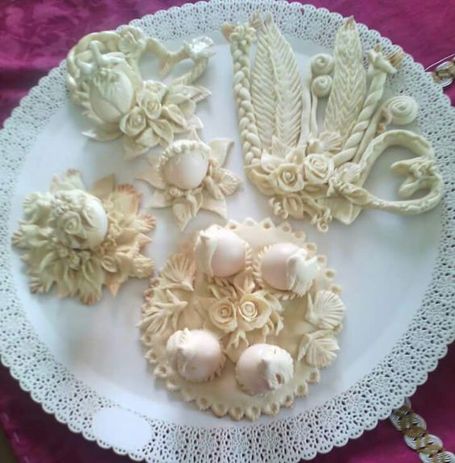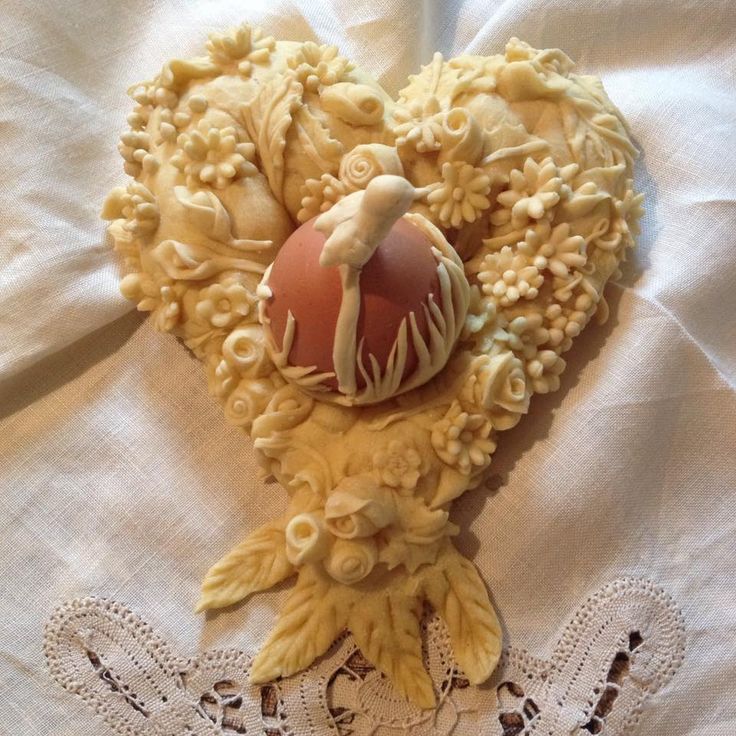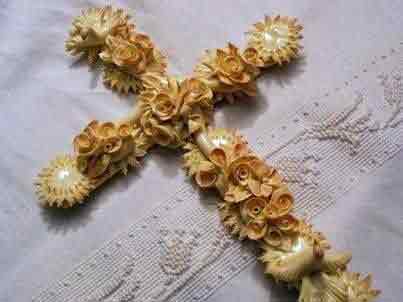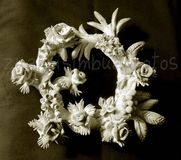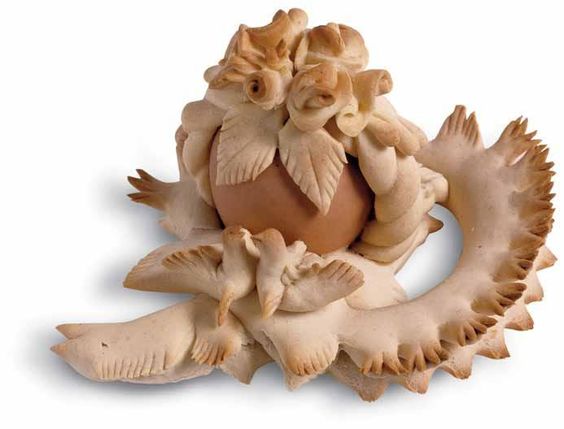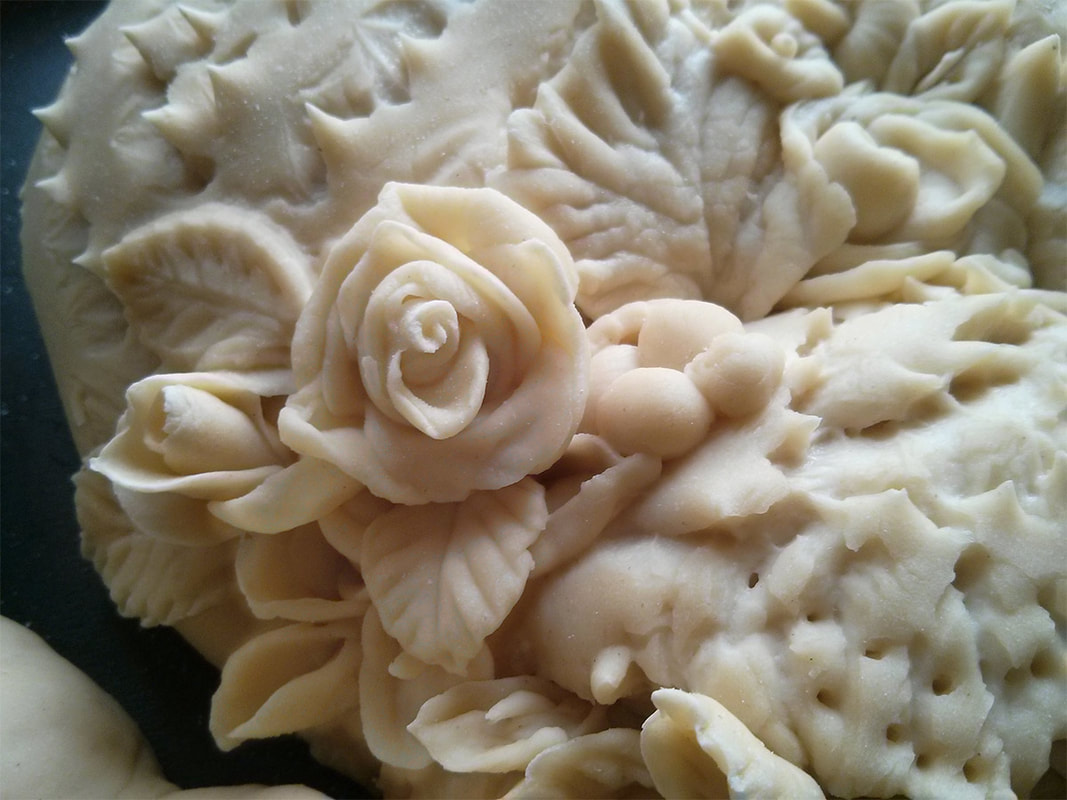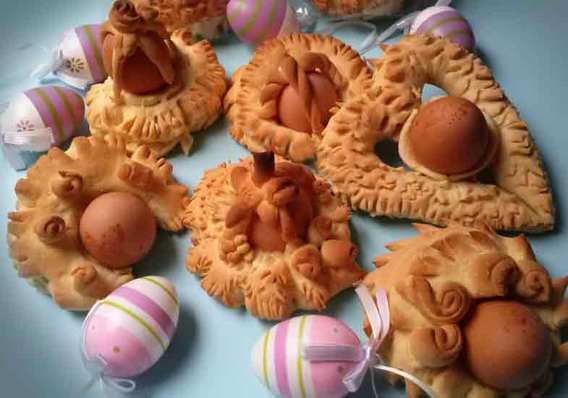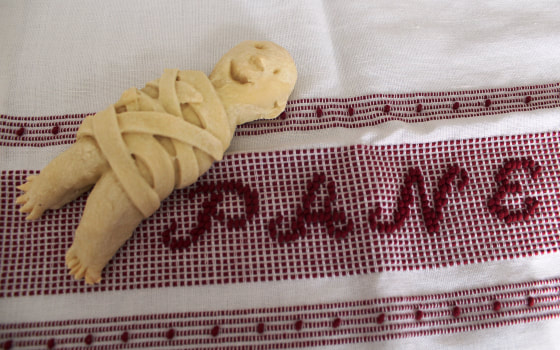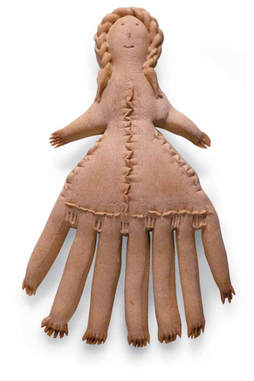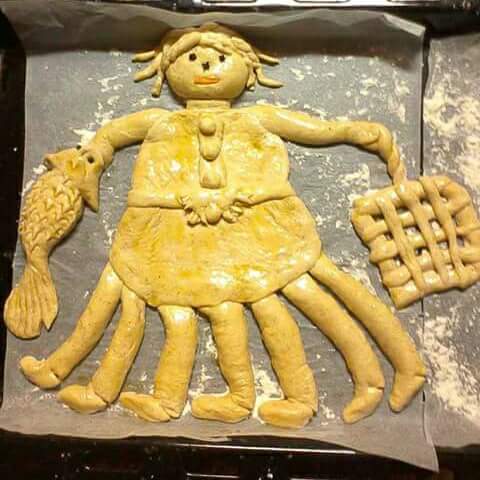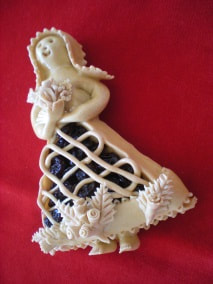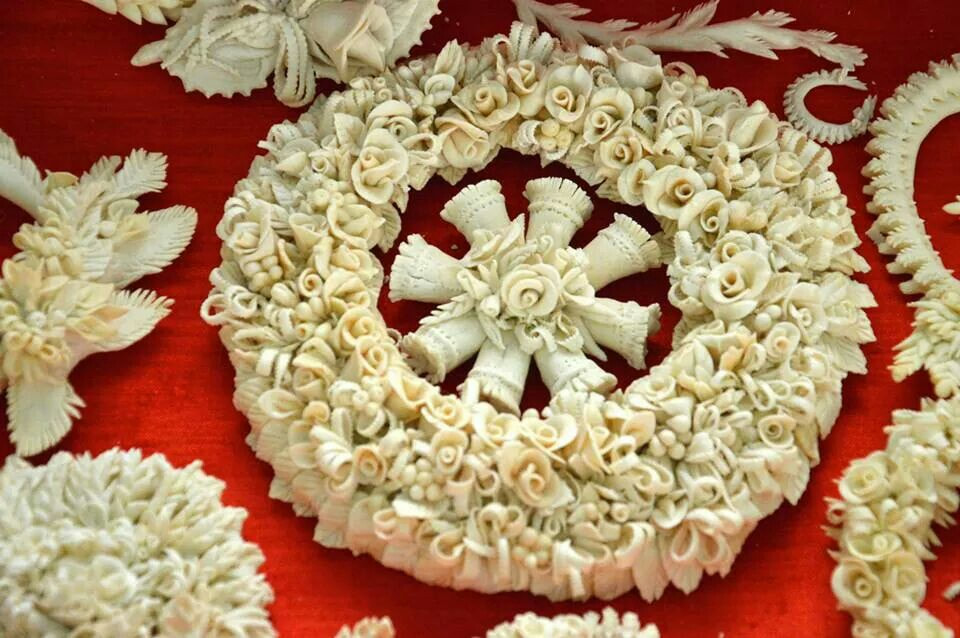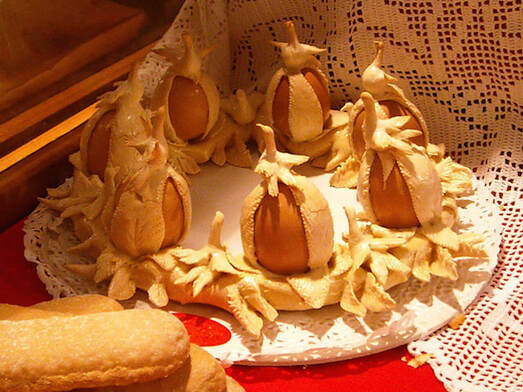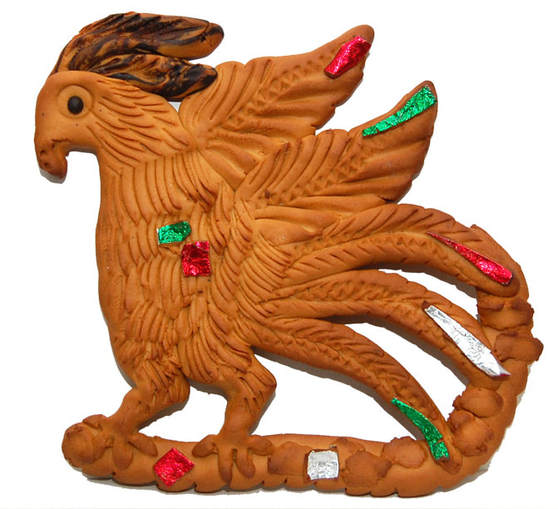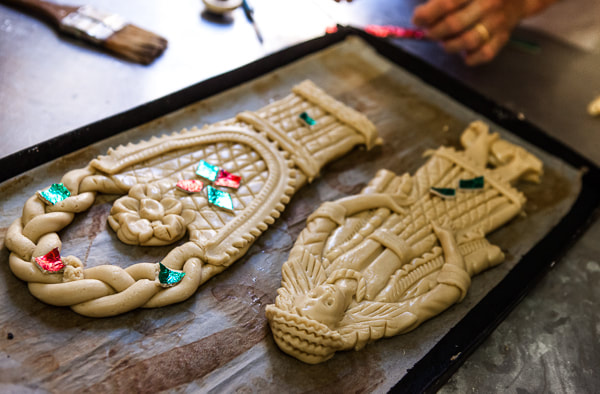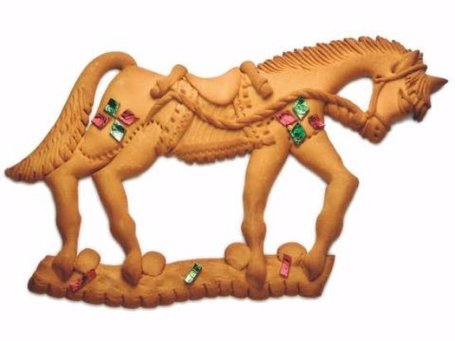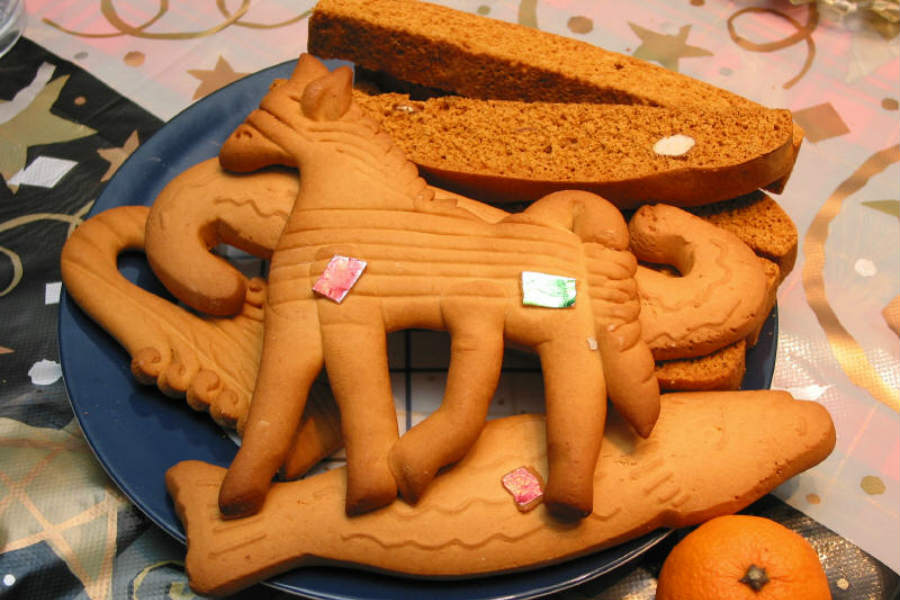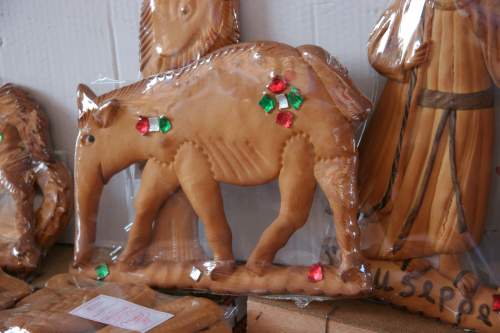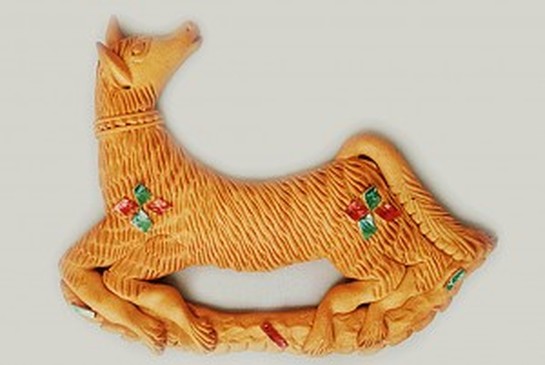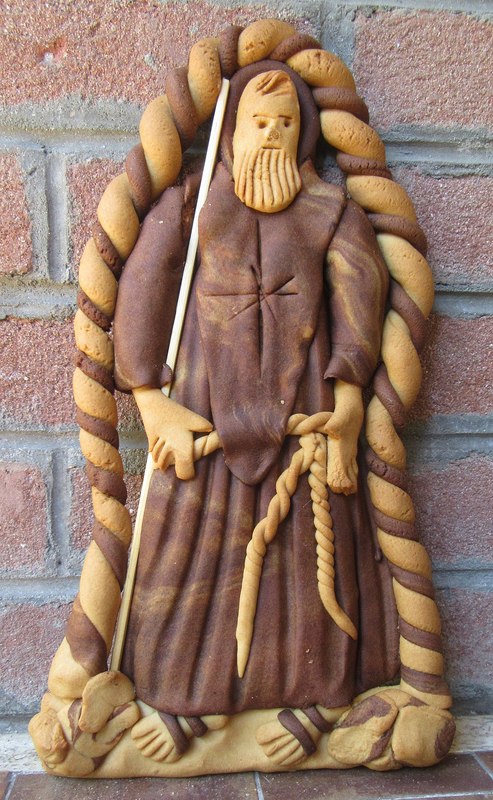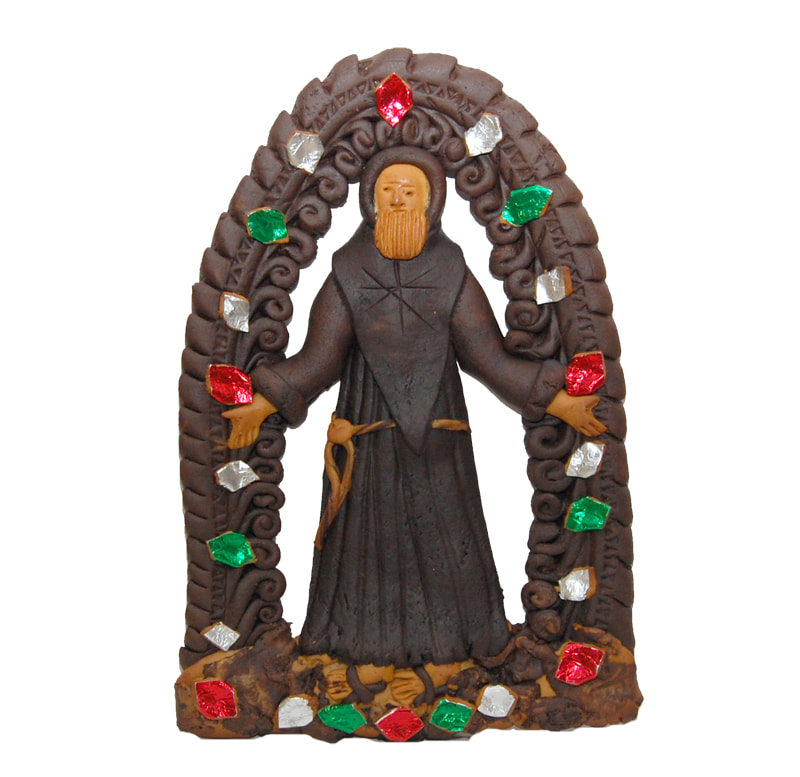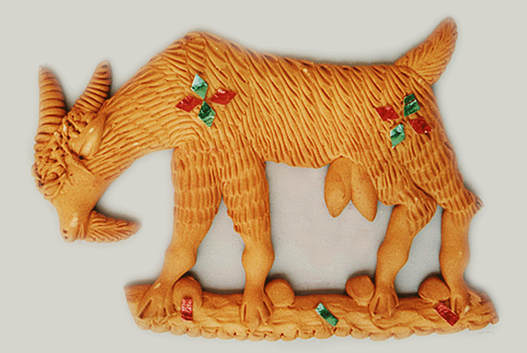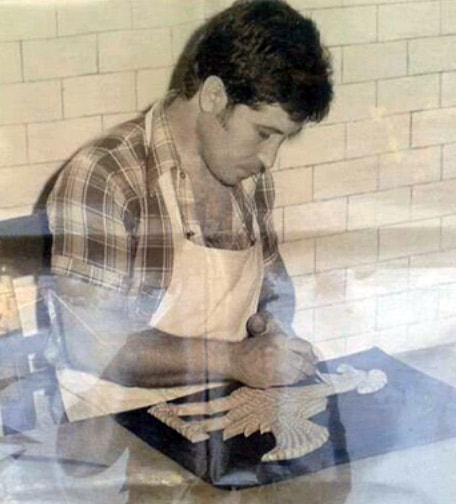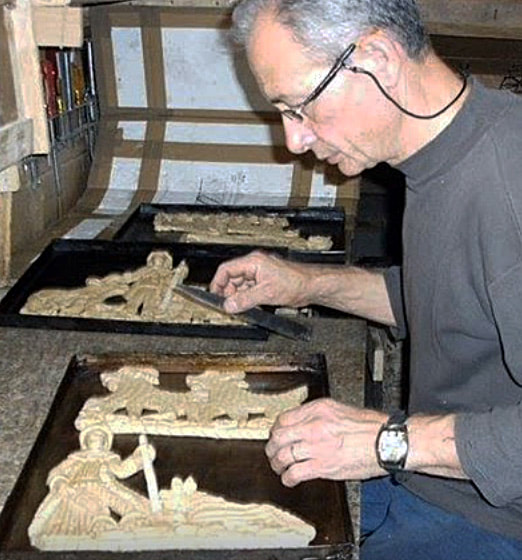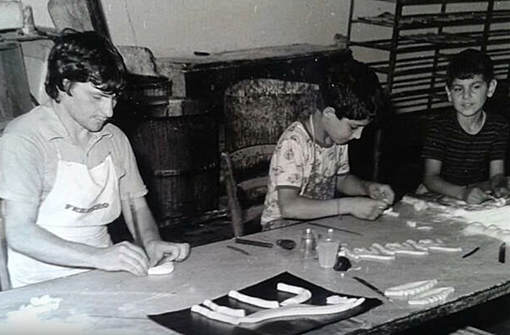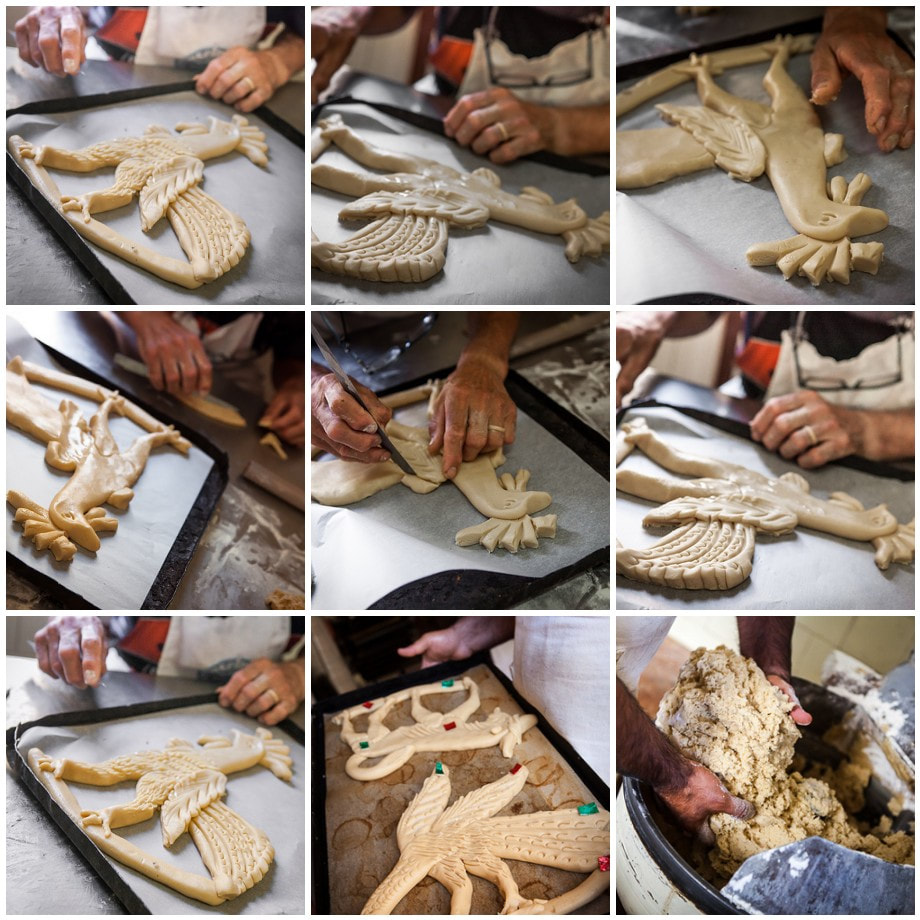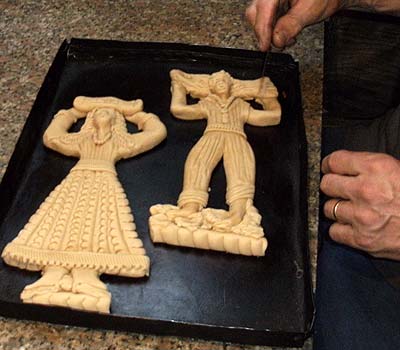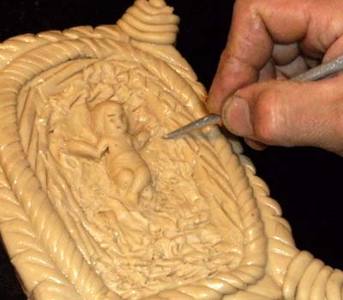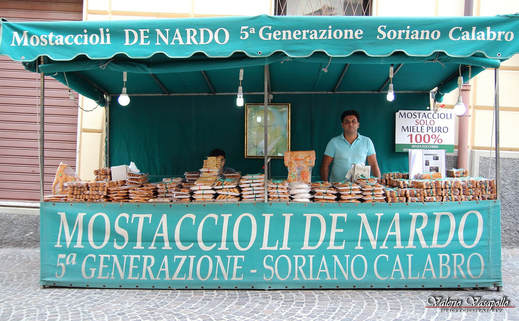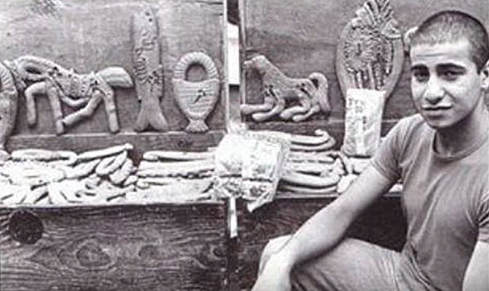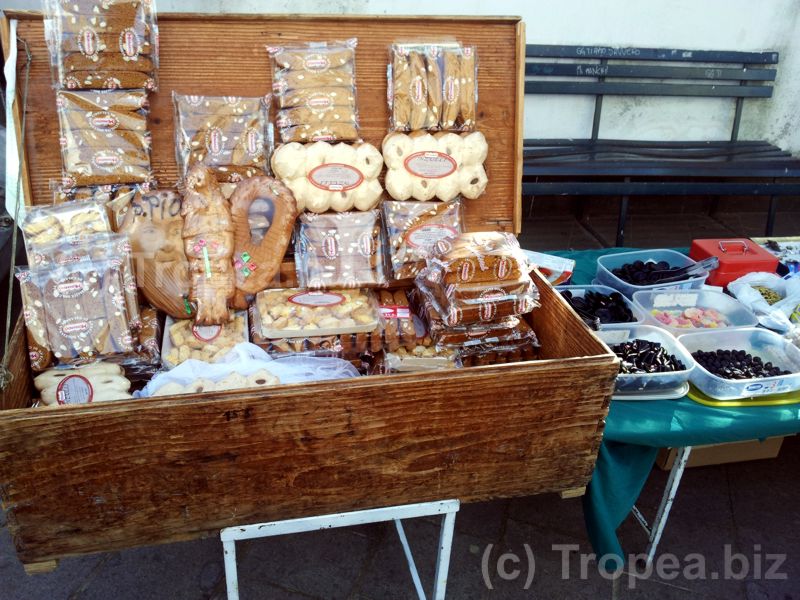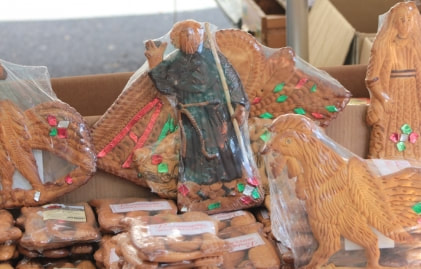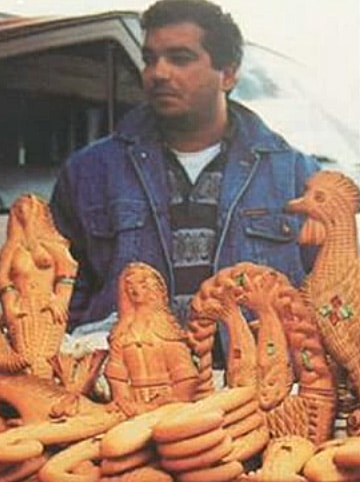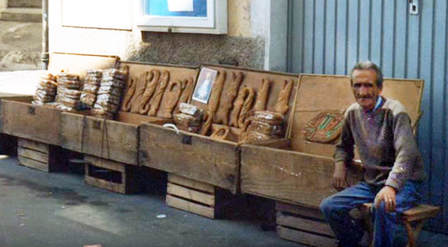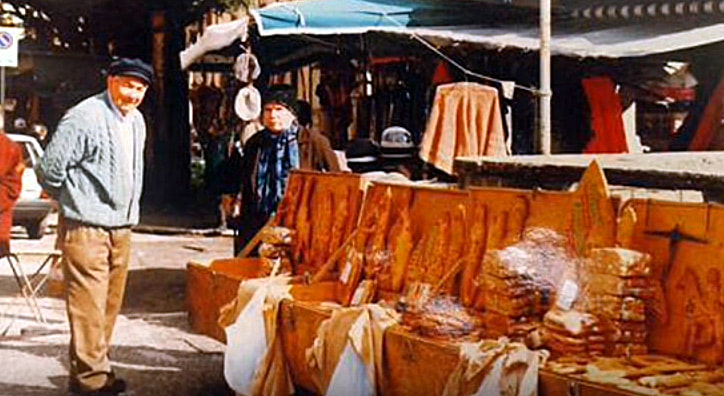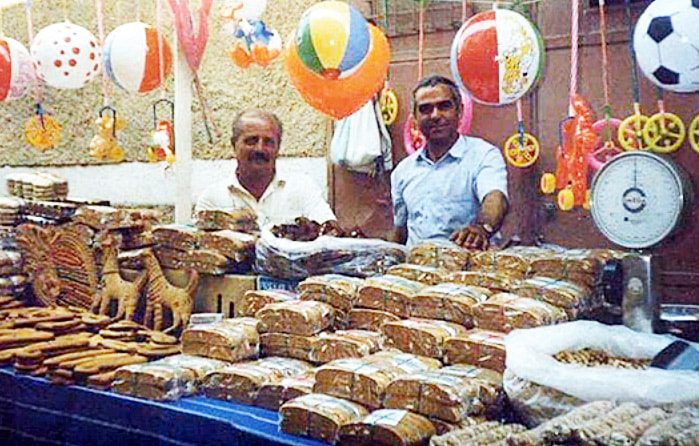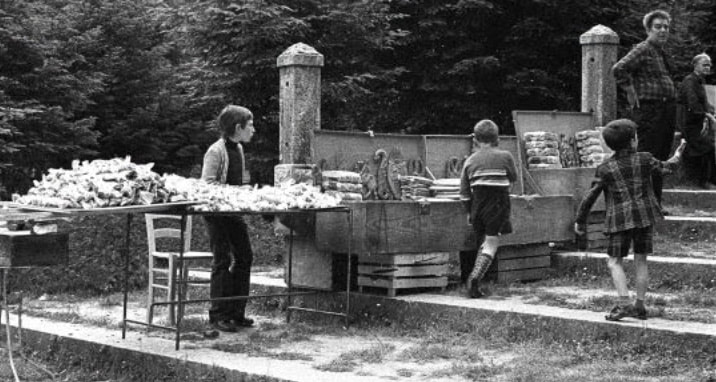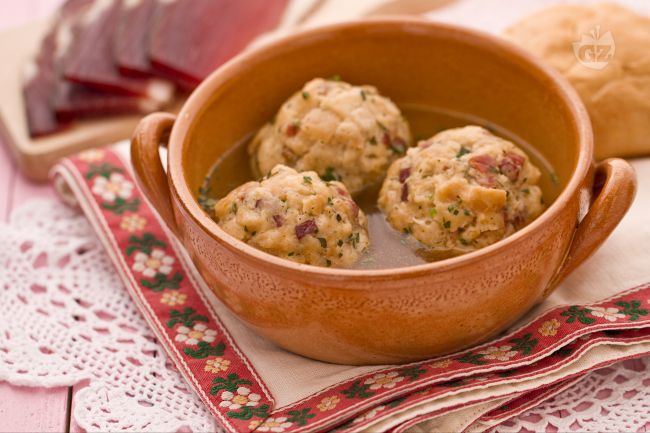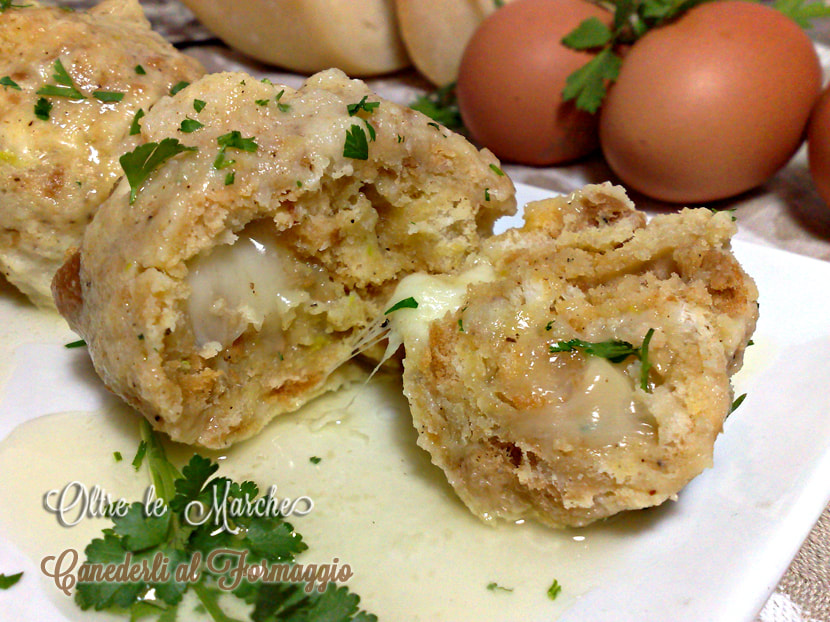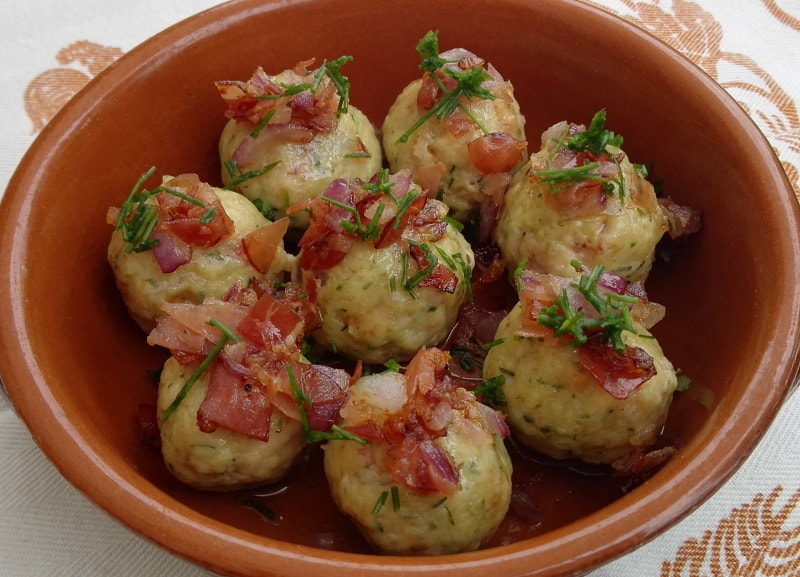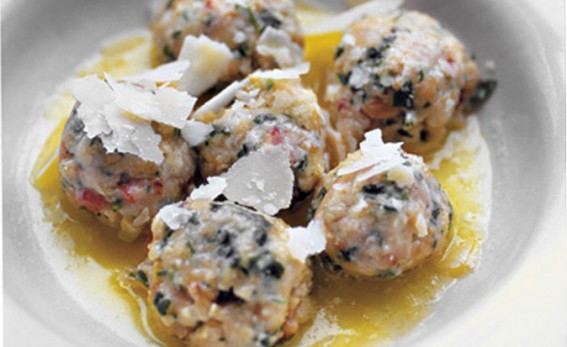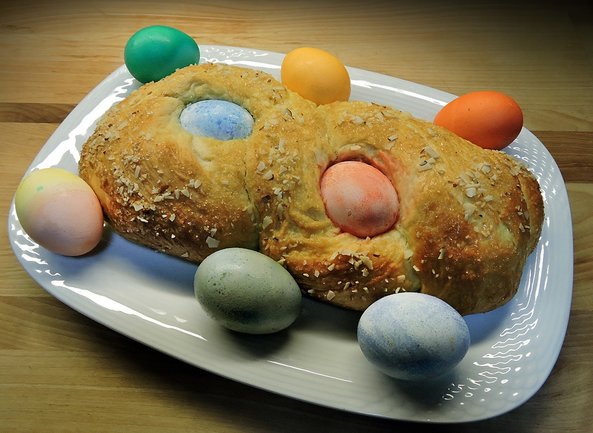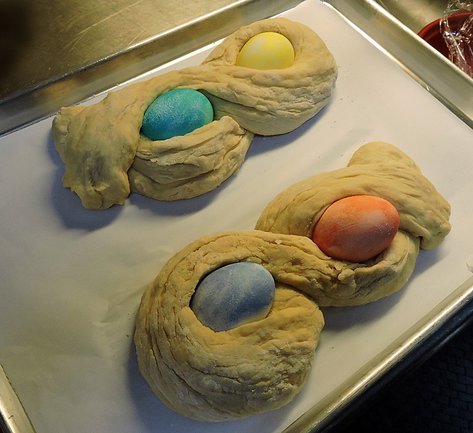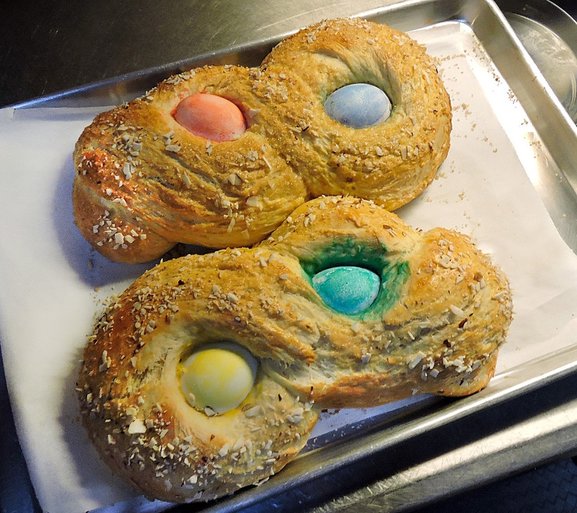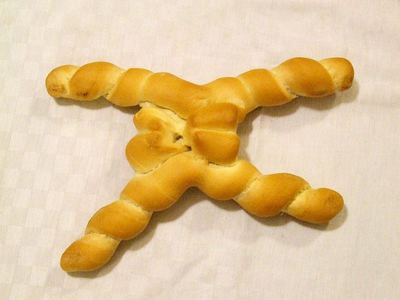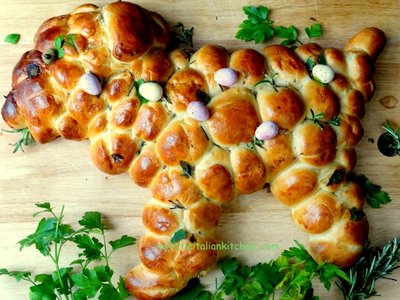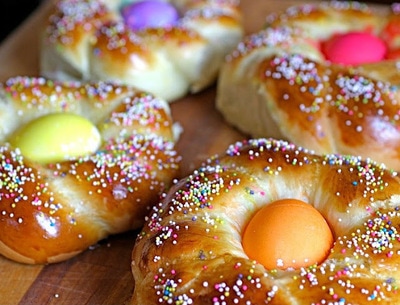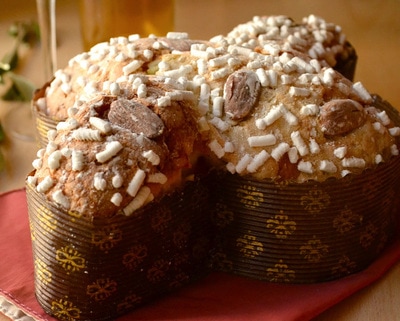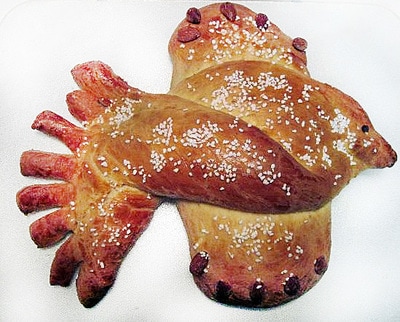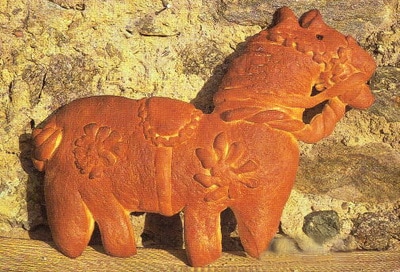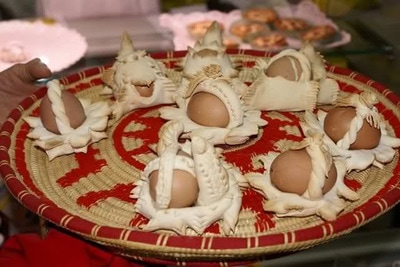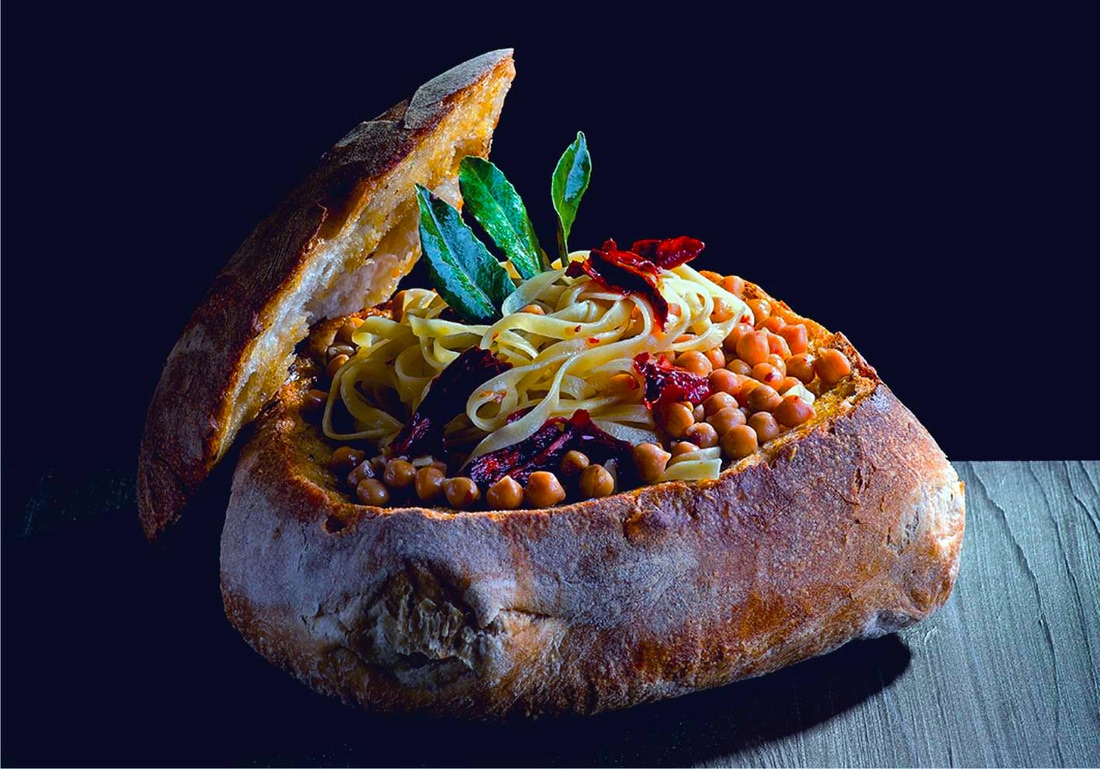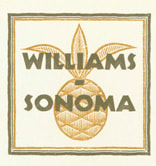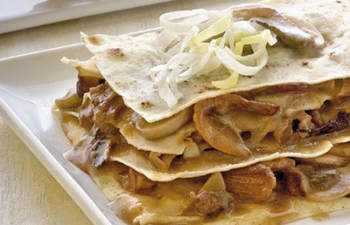
Ancient Sardinians had a saying: Chie hat pane, mai no morit (who has bread, will never die). This is true for most of the world. Pane Carasau is one of the ancient breads they were talking about. You can imagine the ancients making this bread because of its long storage capabilities and portability.
It is a a very thin flat bread--some might call a cracker--that was traditionally made for shepherds by the housewives to carry with them for long months on high pastures with their flocks. They can be eaten with sausage and cheese, or dipped in milk to re-hydrate for colazione and drizzled with honey or jam. Pane Frattau is a soup made with shards of Pane Carasau, meat, eggs, cheese and tomato. Modern Sardinian chefs are also using pane carasau in their recipes, for instance, carasau lasagna. The tedious method by which is is made creates a thin, crispy bread that will last literally for months, even if it happens to crack into shards along their travels. There are some who refer to this flatbread as carte della musica (music sheets) because of its thinness. The dough itself is fairly simple: durum wheat, yeast, water and salt. It's rolled into extremely thin rounds and baked in a wood oven until the bread puffs up like a balloon, then quickly (with dexterity, not to get steam-burned) cut into two halves, making it even thinner. They are then toasted again in the oven and dried completely. Nowadays, in Italy you might even come across packaged Pane Carasau in supermarkets.
Ingredients
Directions
Summer is in full swing, and with Italy currently in the midst of a full blown heatwave, here is an idea from southern Italy that will help you beat the heat...
Brioche Gelato Burgers! More and more popular in Sicily, Puglia and Calabria, the trend is catching on. In the last several years, the sweet, glossy brioche bun has gained popularity in the States, used as the go-to bun for burgers and sliders. But the sweet, soft crumb of the classic brioche also pairs well with gelato (OK, and ice cream, too). Grilling the sliced brioche helps raise the flavor a notch. Toppings or spreads can include, crushed pistachios or sliced almonds, Nutella, Pirouettes crackers, almond biscotti crumbs, whipped cream or zabaglione, or a smear of almond paste. How about a trio of gelato sliders? To add crunch, tuck a pizzelle inside! Stay cool! --GVI 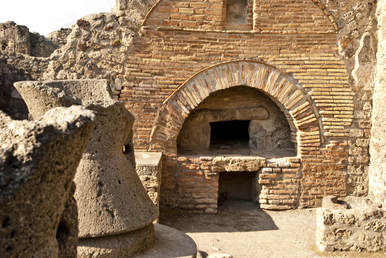 One of many ovens at Pompeii One of many ovens at Pompeii Excerpt from an article by Kristan Melia on Culinary Backstreets/Naples There is evidence that wood-fired ovens similar to the ones used in Naples today were employed by the Ancient Greeks, and some assume that Greek mariners brought this technology with them to the city. Thanks to Vesuvius’ explosive eruption in 79 AD, we can turn to Pompeii for gustatory evidence. Archeologists have unearthed 33 domed clay ovens, complete with chimneys, on the grounds of Pompeii. We know that bread was an important part of the Pompeian diet. The very volcano that would eventually lead to Pompeii’s demise actually contributed to her rise as an early producer of baked goods. The Greek geographer, philosopher and historian Strabo observed that the area around Pompeii and Naples as a result of the soil’s volcanic fecundity, was “the most blessed of all plains, and round about it lie fruitful hills.” It turns out the slopes of Vesuvius were ideal for the growth of cereal grains, and that bread was to become a symbol of Pompeii. An engraving on the entrance to the walled town reads matter-of-factly, “Traveler, you enjoy bread at Pompeii.” The process of grinding the grain to make the bread was arduous. However, the volcanic black lava rock of the region was ideal for shaping tools to grind the local cereals. The practice of crushing, grinding and pounding wheat through a mill was known as pistor and by 160 BC, as Cato documents, the tradesmen responsible for this grinding were known as pistore. When coupled with the ingenious design of the beehive clay oven with chimney, this gave rise to the baking of deceivingly simple, pliable, leavened breads called pinse, so named for the grinding and pounding required to produce them. The pinse would travel through the Roman Empire; years later, we would know its cousins as pissaladiere in Provence, pita in the Middle East and pizza in Naples. 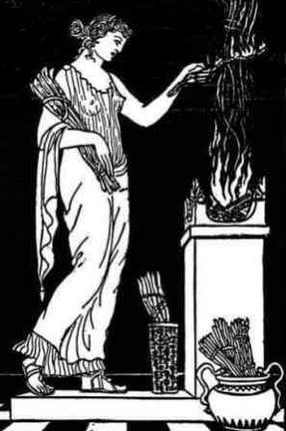 Vesta Vesta In the early days of bread baking in Pompeii, pistore worshiped the god Fornax, the ancient personification of the oven. It is from Fornax that we also derive the word forno (oven), as in forno a legna (wood oven). Every year on February 17, Pompeii’s guild of oven tenders celebrated Fornacalia, lighting and feeding fires in much the same way modern Neapolitans light fires in commemoration of Saint Anthony the Abbot’s day. Years later, Pompeii’s bakers would switch their pious devotions to the goddess Vesta, protector of the hearth – perhaps a testament to the reverence they harbored for the fire that fueled their precious ovens. For all the early success Vesuvius afforded Pompeii’s vibrant grain economy, the volcano would eventually become the town’s undoing. But the traditions of the pistore live on today in the ancient vicolos and back alleys that thread through Naples’ historic center. CLICK HERE TO READ MORE...
Chie hat pane mai non morit.--Sardinia Proverb
One who has bread never dies.
In Sardinian bakeries there is a time honored tradition of elaborate and intricate decoration of celebration breads for weddings and also for Pasqua (Easter), called
Pane Pasquelina, or in local dialect known as Su Coccoi or Pane Coccoi. The designs recall ancient symbols from the many cultural influences in Sardinia. The shapes include the crown, wreathes, the chick, a girl, doves, fish, small baskets, fruits and flowers. Especially for Easter, whole eggs are incorporated into each design, sometimes hidden but often exposed within the design theme. These breads are considered symbols of fertility and good luck. When you look at the intricacies of these artisinal breads, it's surprising to think the only tools used are a small knife and scissors.
Two interesting shapes are called Sa Pippia and Lazzaro. Sa Pippia is a doll-shaped bread with seven legs, one for each day of the Holy Week. This bread was used as an Easter Advent Calendar, one leg given to a child each day leading up to Easter Sunday. Lazzaro represents the body of Lazarus wrapped in a shroud, a symbol of resurrection.
Watch as the Nonni teach the younger women how to create Pane Coccoi
and then bake them in a community oven.
If you'd like to try making these special breads, here is an authentic Sardinian recipe that I translated and converted...
Recipe
Shaping the Dough
Baking Preheat your oven to 450 F degrees with the pizza stone on the middle rack. Place a sheet pan on the bottom or lowest rack of your oven at this point. I suggest using a pizza peel to transfer your breads into the oven and directly onto the pizza stone. If you don't have one, you can use an up-turned sheet pan lined with parchment paper (the paper will slide onto the stone with the dough). Alternately, sprinkle the back of the sheet pan with course cornmeal, then place your shaped breads on top. The cornmeal acts like ball bearings to slide your breads onto the stone. I don't recommend baking your breads on pans simply because the pans would be cold when placed into the oven. If you do want to use pans instead of a pizza stone, use sturdy, heavy dark pans. They will heat up faster. Just before placing your breads into your oven, pour about 1/4 cup of water into the hot sheet pan on the lower rack to create steam. Immediately shut the oven door. Quickly transferring your formed breads into the oven, bake for the first 10 minutes at 450 degrees, then lower the temperature to 350 F degrees and continue cooking for another 20-25 minutes. You might want to quickly spray some water onto the oven's side walls halfway through the baking. Check the browning of the bread and adjust according to your oven. These breads should be a very light tan with a fine textured crumb interior. Remove from the oven and place on cooling racks to dry and cool completely. There is another version that adds eggs, so you can experiment in adding eggs while you compensate by adding more flour. You can still eyeball the smoothness and elasticity of the dough when mixing. Remember, making dough for breads and pizza is a feel thing, varying depending on the humidity of the day. Have a great celebration! Buona Pasqua! --Jerry Finzi
You might also be interested in...
Our Pane di Pasqua Recipe Vintage Italian Easter Cards Decorated Italian Easter Eggs How Italians Celebrate Easter Celebrating Easter in Italy
SHARE ON YOUR SOCIAL MEDIA SITE
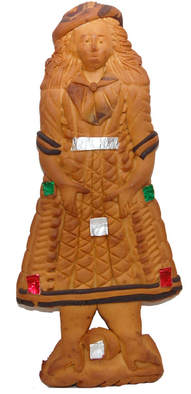 The ancient town of of Soriano Calabro sits between the hills of Calabria and is known for the hard, spiced and shaped biscuits known as Mostaccioli (also, Mastazzola, Mustazzoli). They are traditionally made using grape must, a byproduct from wine-making process. These ornately decorated and shaped treats are popular for festivals, weddings, Christmas and Easter. The more traditional shapes include a parma (the palm), u panaru (the basket), a grasta (the heart), u pisci spada (the swordfish), and a sirena (the siren). Aside from the myriad of shapes, they are decorated with colored foil and some might even have been created using different colors of dough. These are not molded but cut and assembled by hand. 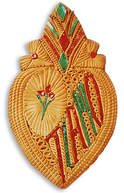 You can still see Mastazzolari (vendors) selling plastic wrapped Mostaccioli from their wooden trunks at sagre in the region, with parents buying ones shaped like a horse or bird for their children, or the devoted purchasing one shaped like a saint, angel, fish or basket as an offering on a saint's day. A heart shaped one might be given on a wedding, engagement or on San Valentino's day. 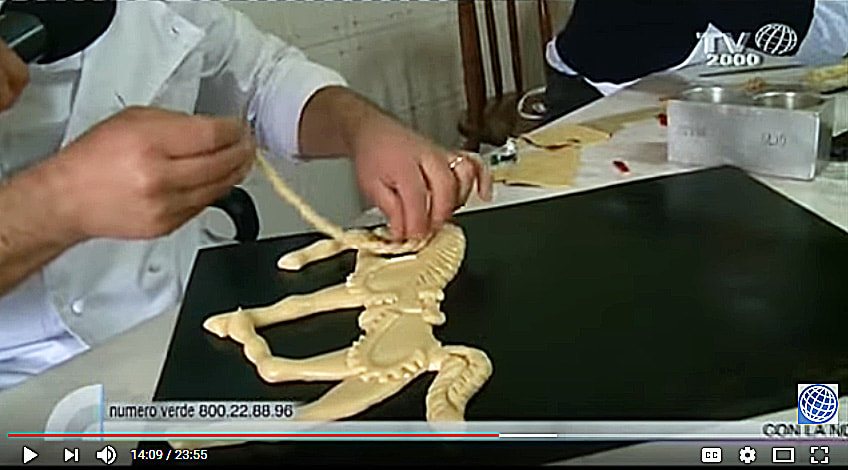 Or, if you prefer, you can watch the video right here... Click below. Creating Mostaccioli Mastazzolari and How They Sell Their Wares
Well... Almost. Canederli are bread dumplings found in the north-east of Italy (Trentino-Alto Adige, Friuli, and part of the Veneto), typically served in beef broth, dry or with a sauce. They are made using stale bread, milk, onions, parsley, eggs and a little flour. Often they are stuffed with speck (a smoked prosciutto), cheese, mushrooms or pancetta. You can also serve them as a side with sausages. Canederli with Speck
Ingredients 1/2 pound of stale bread 2 eggs, beaten 6 ounces diced Speck 1 medium onion, diced 6 cups milk fresh parsley 4 tablespoons butter, softened 1 tablespoon flour pinch nutmeg Pinch salt Instructions
There's nothing like making a Pane di Pasqua for Easter. This is a traditional holiday egg bread that usually contains hard boiled eggs--baked right into the bread. It can be eaten as a snack with honey or jam, served with a meal or given as gifts when visiting family. Variations of Easter celebration breads are made throughout Italy. To celebrate Easter in Sicily, they make "baby-doll" breads for girls, and breads shaped like ducks, lambs and horses for boys. In most areas of Italy, there are Easter breads and mostly are sweet and contain whole, brightly dyed eggs which are braided into the bread, with the eggs cooking during the baking. In Lombardy there is the Colomba Pasquale (literally "Easter dove"), which has become popular throughout Italy. In Sardinia, the celebration breads get even more intricate, with scissor work on the dough adding amazing details in Easter egg baskets. The eggs can be brightly colored or natural. In the Greek tradition, the same sort of bread is made with eggs dyed red by using onion skins. The eggs represent birth, or rather, at Easter the re-birth. This recipe can make one round bread or two smaller straight braided breads, or 6 individual breads. Boiling and Dying the eggs: For perfect eggs:
You can dye 4-6 eggs, only after hard-boiling them. In the past, I've tried to use raw eggs placed directly in the dough, but they often are a bit under-cooked--not soft boiled, but a bit under. If you want to make real looking like partridge eggs, dye them a pale blue and then use a tooth brush with brown dye to put blotches and spots all over each egg. Proofing the Yeast: 1 tablespoon instant or active dry yeast. 1/3 cup milk (at 115 F) 1 tablespoon sugar
For the dough: 2 1/2 - 3 cups all-purpose flour (depends on humidity... don't put in all the flour if it doesn't need it, but if it's a rainy day or you're using jumbo eggs, you might need 4 cups). 1/2 cup warm milk (115 F) 1/4 cup orange juice (room temperature) 1/2 cup sugar 1 teaspoon salt 8 tablespoons butter (softened & cut into small pieces) 3 eggs well beaten (You can substitute Egg Beaters if you like). 1 teaspoon vanilla (or almond flavoring for a more Italian flavor) For egg wash and topping: 2 eggs beaten (egg wash for brushing) 2 tablespoons sliced almonds 2 tablespoons turbinado sugar colored sprinkles (optional) Directions
Forming the Bread
Here are some other variations on Pane di Pasqua... --Jerry Finzi
|
Archives
July 2023
Categories
All
|

